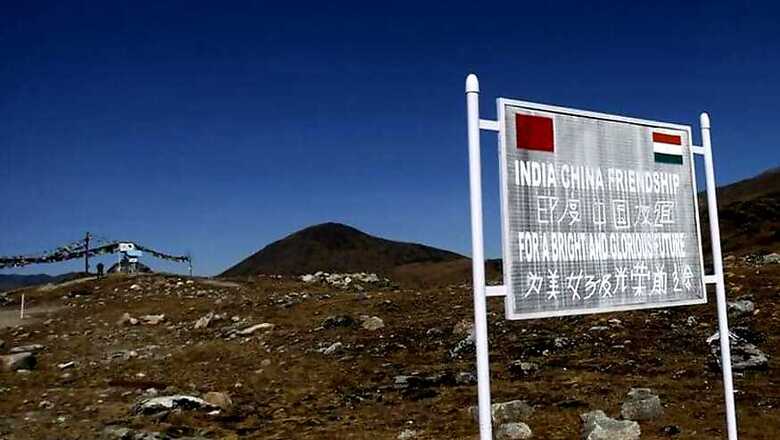
views
Despite the fact that India stood up to a near-superpower like China on behalf of Bhutan over the 70-day-long standoff in Doklam at India-Bhutan-China trijunction and forced China to withdraw its troops as well as road-building equipment from Doklam, all is not well between India and Bhutan. A big reason to worry for the Indian strategic establishment is that the Chinese influence in Bhutan is increasing steadily. And this too when China and Bhutan still don’t have formal diplomatic relations!
The Chinese have made deep inroads into all possible strata of Bhutanese society – political parties, politicians, NGOs, media and even the royal family of Bhutan. Besides, cheap Chinese goods have flooded the Bhutanese markets and edged out Indian goods.
And all this when China doesn’t have an embassy in Thimpu, though the Chinese have been pestering the Bhutanese for the same for over a decade! It’s obvious that the Chinese strategic footprints in Bhutan would have enlarged exponentially if they had a full-fledged embassy in Thimpu. Five years ago, the Chinese had formally raised this issue with the Bhutanese at the highest levels, but nothing has happened largely due to the Indian opposition.
The then Bhutanese premier Lyonchhen Jigmi Y. Thinley met his Chinese counterpart Wen Jiabao on 21 June 2012 at the sidelines of the Rio de Janeiro summit where Wen strongly pitched his suggestion for having formal diplomatic relations as soon as possible. A statement from the Bhutanese Prime Minister’s office noted thus: “The meeting carries great historic significance as it marks the first meeting between the heads of the two governments.”
Lyonchhen was quoted by Xinhua news agency as saying that Bhutan “wishes to forge formal diplomatic ties with China as soon as possible” as well as settle border issues “in a cooperative manner.” However, the Media Attache of the Bhutan Prime Minister’s office claimed that ‘local Chinese media had misreported that Bhutan and China will establish diplomatic ties.”
This issue is not dead as far as the Chinese are concerned and their top priority vis a vis Bhutan remains opening formal diplomatic channels with Bhutan. The Chinese are quite exasperated to see that though Bhutan has expanded their foreign relations with as many as 53 countries in recent years and the last country on the Bhutanese list was Oman, China continues to be cold-shouldered by Bhutan which they blame on India.
The Doklam episode saw subtle shades of Bhutanese disenchantment with India when China had officially claimed that the Bhutanese had conveyed to them that Doklam is Chinese territory, though Bhutan later denied the claim. But there can’t be any smoke without fire. This was perhaps the first time when indications came that Bhutan was saying something to India and something else to China.
Just a few days before the Doklam issue was resolved, Japanese daily Nikkei published a sensational report written by a Japanese which said that China had offered Bhutan $10 billion in economic assistance to soften its stance. The Nikkei report remarked thus: “Sources say that since the offer, Bhutan has toned down its allegations that China is violating its territorial claims.” The Nikkei report can be read in full here: https://asia.nikkei.com/Politics-Economy/Policy-Politics/China-woos-Bhutan-with-10-billion-in-standoff-with-India?n_cid=NARAN1507
Besides, for quite some time diplomatic circles are abuzz with reports that China is prepared to give Bhutan almost twice its territory in lieu for the 269 square kilometer Dramana area which includes Doklam. Bhutan has resisted China's attempts so far but may not hold fort for long.
China has also been dangling another carrot before Bhutan: that it is willing to resolve its border dispute with Bhutan in one go and willing to formally demarcate its 470-km-long border with Bhutan, 25% of which is disputed, if Bhutan opens formal diplomatic relations with China.
Another point of concern from the Indian viewpoint is that the Bhutanese are increasingly getting restive and more demanding with India. They are miffed with India that it has cut down its aid to Bhutan by over 30 per cent, a fact which the Indians are using as a stick to give a jolt for Bhutan’s ambivalence. But despite the cut, Bhutan is getting almost $600 million from India in 2017-18 financial year, far less than $985 million in 2015-16 but still a hefty sum considering that Bhutan’s total GDP is a little over two billion dollars.
Though India still remains influential over Bhutan's foreign policy, defence and commerce, there is another grievance of the Bhutanese vis a vis New Delhi. They blame India over the tardy rate of developmental projects, particularly hydel power projects.
India operates three hydro power projects, of 1,416 MW in Bhutan and 3 more of 2,129 MW are under construction. Despite this Bhutan is currently tapping only five percent if its 30,000-MW hydel power potential.
India needs to raise its investment in Bhutan manifold in double quick time to keep the Dragon at bay. China's proposal of investing ten billion dollars in Bhutan may not work out because cheque book diplomacy has its own limits. Saudi Arabia too had dangled a $10 billion investment carrot before Maldives but the proposal fell through. The reason: small countries can’t be bought over by bigger and more prosperous countries. That would tantamount to annexing smaller countries by other means.
And yet, India has to be alert and do more to prevent its only model neighbour from falling into the Chinese lap.
(Rajeev Sharma is a strategic analyst and columnist who tweets at @Kishkindha. Views are personal)
















Comments
0 comment